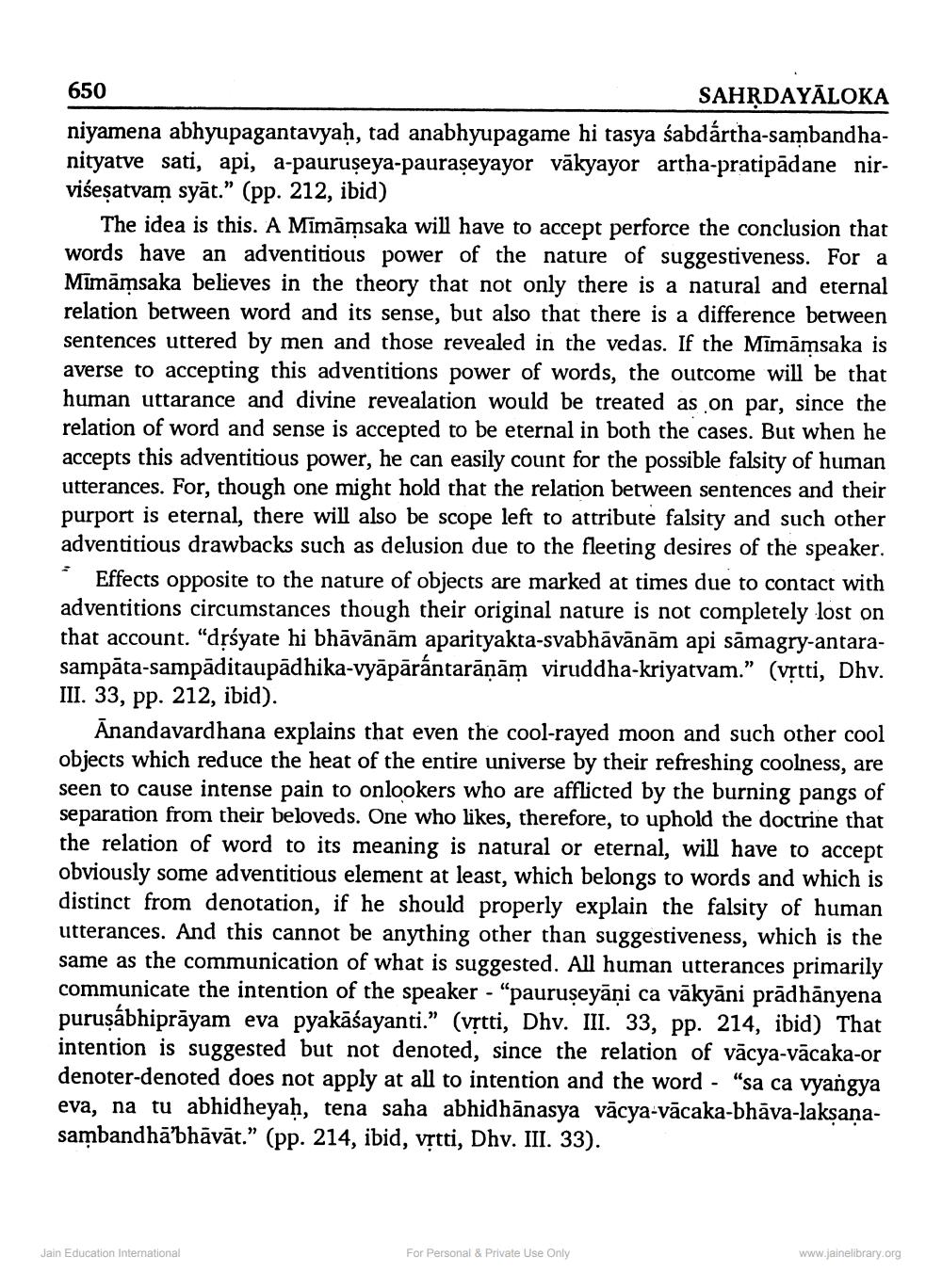________________
650
SAHRDAYĀLOKA niyamena abhyupagantavyaḥ, tad anabhyupagame hi tasya śabdártha-sambandhanityatve sati, api, a-pauruseya-pauraseyayor vākyayor artha-pratipādane nirvišeșatvam syāt.” (pp. 212, ibid)
The idea is this. A Mimāmsaka will have to accept perforce the conclusion that words have an adventitious power of the nature of suggestiveness. For a Mimāmsaka believes in the theory that not only there is a natural and eternal relation between word and its sense, but also that there is a difference between sentences uttered by men and those revealed in the vedas. If the Mimāmsaka is averse to accepting this adventitions power of words, the outcome will be that human uttarance and divine revealation would be treated as on par, since the relation of word and sense is accepted to be eternal in both the cases. But when he accepts this adventitious power, he can easily count for the possible falsity of human utterances. For, though one might hold that the relation between sentences and their purport is eternal, there will also be scope left to attribute falsity and such other adventitious drawbacks such as delusion due to the fleeting desires of the speaker.
Effects opposite to the nature of objects are marked at times due to contact with adventitions circumstances though their original nature is not completely lost on that account. "drśyate hi bhāvānām aparityakta-svabhāvānām api samagry-antarasampāta-sampaditaupādhika-vyāpārántarānām viruddha-kriyatvam.” (vrtti, Dhv. III. 33, pp. 212, ibid).
Anandavardhana explains that even the cool-rayed moon and such other cool objects which reduce the heat of the entire universe by their refreshing coolness, are seen to cause intense pain to onlookers who are afflicted by the burning pangs of separation from their beloveds. One who likes, therefore, to uphold the doctrine that the relation of word to its meaning is natural or eternal, will have to accept obviously some adventitious element at least, which belongs to words and which is distinct from denotation, if he should properly explain the falsity of human utterances. And this cannot be anything other than suggestiveness, which is the same as the communication of what is suggested. All human utterances primarily communicate the intention of the speaker - "pauruseyāni ca vākyāni prādhānyena purusábhiprāyam eva pyakāśayanti.” (vịtti, Dhv. III. 33, pp. 214, ibid) That intention is suggested but not denoted, since the relation of vācya-vācaka-or denoter-denoted does not apply at all to intention and the word - "sa ca vyangya eva, na tu abhidheyaḥ, tena saha abhidhānasya vācya-vācaka-bhāva-lakṣaṇasambandhābhāvāt.” (pp. 214, ibid, vrtti, Dhv. III. 33).
Jain Education International
For Personal & Private Use Only
www.jainelibrary.org




